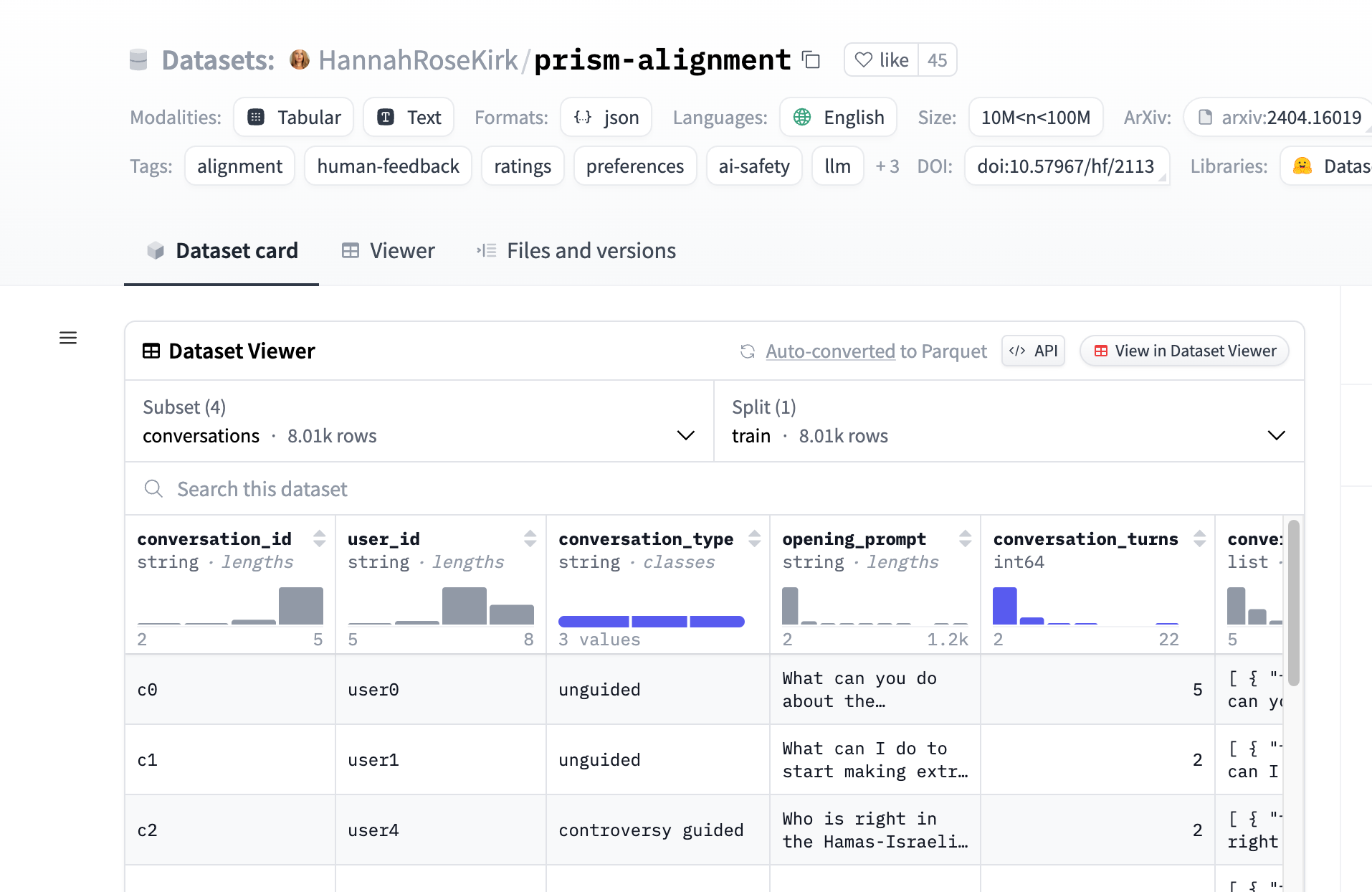

Prism Alignment
Overview :
prism-alignment, created by HannahRoseKirk, is a dataset focused on studying the preferences and value alignment of large language models (LLMs). The dataset collects ratings and feedback from participants of diverse nationalities and cultural backgrounds on model responses gathered through surveys and multi-turn conversations with language models. This data is crucial for understanding and improving the value alignment of artificial intelligence.
Target Users :
The?prism-alignment?dataset?targets?researchers and students in the fields of natural language processing, artificial intelligence, and social science. It is suitable for those interested in exploring and improving AI value alignment, conducting cross-cultural studies, or developing dialogue agents that better align with human values.
Use Cases
Researchers use the prism-alignment dataset to analyze people's preferences for AI behavior across different cultural backgrounds.
Students utilize the dataset for coursework projects, exploring AI ethics and value alignment issues.
Developers leverage the dataset's feedback to train and refine dialogue systems, making them more aligned with user expectations and values.
Features
Contains diverse modalities such as tables and text, as well as various formats, including JSON.
Covers English language data with a size ranging from 10M to 100M.
The dataset is equipped with detailed labels such as alignment, human feedback, preference, and AI safety.
Supports data processing using libraries like pandas and mlcroissant.
Follows the Creative Commons license, encouraging research and educational use.
The dataset has undergone ethical review and is supported by multiple funding sources.
How to Use
Step 1: Access the prism-alignment dataset page on Hugging Face.
Step 2: Download the dataset, selecting the appropriate format and subset as needed.
Step 3: Use libraries like pandas or mlcroissant to load and initially explore the data.
Step 4: Based on research objectives, filter and analyze relevant variables within the dataset.
Step 5: Utilize the feedback information within the dataset to guide AI model training and optimization.
Step 6: Apply the insights gained from the dataset in research or projects to improve AI value alignment.
Step 7: Adhere to the dataset's usage agreement and correctly cite the dataset source.
Featured AI Tools

Gemini
Gemini is the latest generation of AI system developed by Google DeepMind. It excels in multimodal reasoning, enabling seamless interaction between text, images, videos, audio, and code. Gemini surpasses previous models in language understanding, reasoning, mathematics, programming, and other fields, becoming one of the most powerful AI systems to date. It comes in three different scales to meet various needs from edge computing to cloud computing. Gemini can be widely applied in creative design, writing assistance, question answering, code generation, and more.
AI Model
11.4M
Chinese Picks

Liblibai
LiblibAI is a leading Chinese AI creative platform offering powerful AI creative tools to help creators bring their imagination to life. The platform provides a vast library of free AI creative models, allowing users to search and utilize these models for image, text, and audio creations. Users can also train their own AI models on the platform. Focused on the diverse needs of creators, LiblibAI is committed to creating inclusive conditions and serving the creative industry, ensuring that everyone can enjoy the joy of creation.
AI Model
6.9M













